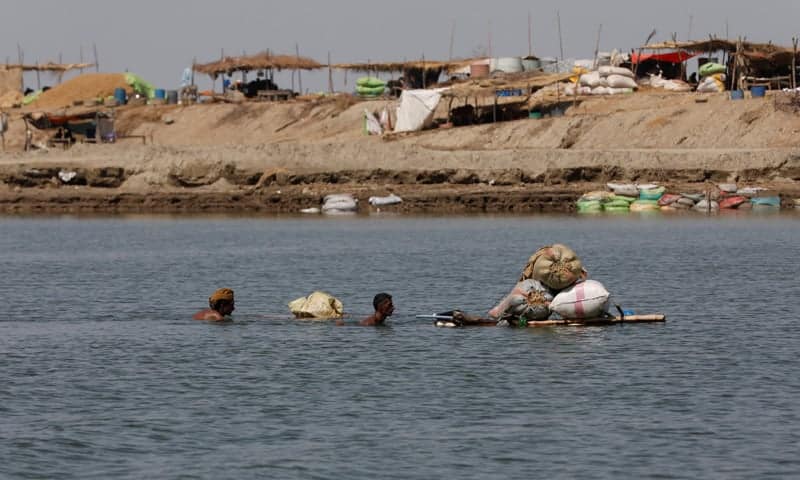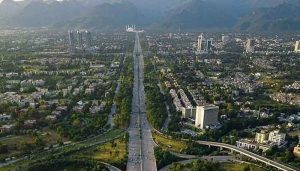Reliable weather predictions and climate services are necessities to lessen the blow of climate change. Pakistan’s public and private sectors are increasingly considering offering these services. Unfortunately, many of these endeavours are either too bureaucratic, lack proper scientific review, or are simply wrong, resulting in inaccurate forecasts and useless solutions. This article looks at Pakistan’s climate services as they are, pointing out where they fall short and offering suggestions for improving them so the country can weather climate change.
Predicting atmospheric conditions at a future date and place is the essence of weather forecasting. Numerical weather prediction models, which mimic atmospheric processes using mathematical equations, are crucial to modern forecasting. These models need massive volumes of data, including humidity, pressure, wind speed, and temperature, gathered from various sources like balloons, weather stations, and satellites.
Global weather prediction centres, such as the NOAA and the European Centre for Medium-Range Weather Forecasts (ECMWF), are essential in providing weather forecasts. These hubs process data using supercomputers and provide predictions that are used worldwide. However, data integration and local knowledge are crucial to improving these predictions for regional accuracy.
Systems of Global Circulation: El Niño and La Niña
El Niño and La Niña are major climatic events that affect weather patterns worldwide. They form a portion of the El Niño-Southern Oscillation (ENSO), a broader climate cycle.
The El Niño phenomenon is characterized by abnormally warm surface waters in the central and eastern Pacific Ocean, which disrupts the usual weather patterns. El Niño usually causes more rain in the southern US and Peru, whereas in Australia and Indonesia, it causes drought. It can potentially increase the frequency and intensity of storms, raise average world temperatures, and change precipitation patterns.
When the surface waters of the Pacific Ocean fall below average, a phenomenon known as La Niña occurs, which is the opposite of El Niño. Conditions in the southern United States tend to be drier during La Niña, while Australia and Indonesia see wetter weather. Hurricanes in the Atlantic may become more robust, world temperatures may drop, and precipitation patterns may shift.
The El Niño Southern Oscillation (ENSO) also affects the climate trend in Pakistan. Warmer temperatures in the Pacific Ocean interrupt air circulation worldwide when El Niño occurs—Pakistan and the rest of South Asia experience drier weather. Droughts, caused by less monsoon rainfall during El Niño years, can affect water resources and agriculture. La Niña occurrences, characterized by milder temperatures in the Pacific Ocean, frequently cause Pakistan to experience more rainfall, increasing the likelihood of floods and landslides. If Pakistan wants to improve its water management and catastrophe preparedness, it must have a firm grasp of ENSO cycles.
Problems Facing Pakistan’s Climate Services Right Now
Pakistan’s National Disaster Management Authority (NDMA) and commercial weather services rely too heavily on ECMWF and other worldwide forecasting models. Despite their sophistication, these models do not reliably predict weather in certain regions. Take May/June 2024 as an example; the NDMA used global models to forecast record-breaking heatwaves and floods, but nothing happened. Similarly, many weren’t ready for the early 2023–24 winter because of the wrong estimates about how much rain and snow would fall.
Pakistan’s climate services frequently rely on partial data from non-indigenous sources rather than integrating local knowledge with global forecasts, which contrasts with many other nations. This method’s predictions are less reliable, and the Pakistan Meteorological Department’s (PMD) function is diminished.
Pakistan has not made much of a dent in climate science because the country has not implemented thorough teaching programs or research projects about climate change. There is a severe lack of qualified individuals to work in the Earth and atmospheric sciences because neither public nor private institutions provide specialized degrees.
Weak Observation Network: Accurate data collecting and processing are impeded by a sparse network of observation points and weather stations. This scarcity hinders accurate understanding and prediction of climate patterns.
The Role of Different Industries in Climate Services
Various sectors influence the delivery and enhancement of climate services in Pakistan:
1. Government Agencies: The central government bodies in charge of weather forecasting and disaster management are the NDMA and the PMD. However, bureaucratic red tape and a lack of communication frequently impede their progress.
2. The private sector includes weather hobbyists and services, although their predictions have not constantly been adequately tested and are hence incorrect.
3. Institutions of Higher Learning and Scientific Investigation: Think tanks and academic institutions can make a big splash in the climate service industry. However, their impact is limited by the present situation in terms of research funding and specialized education programs.
4. Groups working outside of government that aim to improve people’s lives by assisting them in adapting to and surviving climate change include non-governmental organizations (NGOs).
Suggestions for Enhancing Pakistan’s Climate Services
·Improve the PMD’s function by combining regional knowledge with national projections, strengthening local expertise. For more accurate regional forecasts, push for more cooperation between the PMD and global forecasting hubs.
·Increase Climate Literacy by Creating Thorough Earth and Atmospheric Science Degree Programs at Public and Private Institutions of Higher Learning. Increase financing and worldwide collaborations for climate science research.
·Strengthen Observation Networks: Put money toward updating and adding to the nation’s network of weather stations. The results are better data collection and more precise predictions.
·The commercial sector, academic institutions, and government organizations should all work together more closely. The overall efficacy of climate services can be improved by avoiding duplication of effort and establishing clear missions and responsibilities.
·Raise Conscience: Tell everyone what a difference reliable climate and weather predictions can make. Initiate programs to strengthen community resilience and adapt to climate change.
Building a solid climate science infrastructure is crucial for Pakistan’s future. Pakistan may enhance its climate services and be better prepared for the effects of climate change if it fills the gaps in education, research, and interagency cooperation that are present. Improved weather forecasts will make the nation safer and more resilient in the future, therefore it’s important to work hard to boost local knowledge while also incorporating global predictions.
Disclaimer: The views and opinions expressed in the article belong solely to the author and not necessarily to the author’s employer, organization, or other group or individual.














